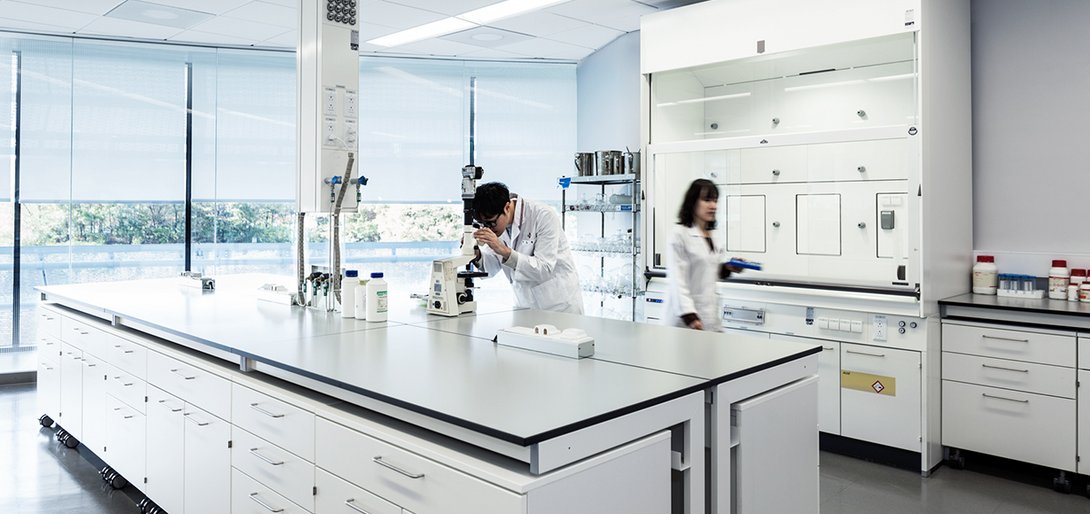A contribution by Dr. Robert Rupp, Prevention and Health Promotion at Heidelberg University of Education, and leader of the “Kopf-Stehen” project
Get up! Moving while working is healthier
Laboratory work has become increasingly similar to classic computer-based office work, which requires prolonged periods of sitting. Regular standing up and moving around are therefore becoming increasingly important for healthy and productive lab work.
Humans are spending more and more time sitting down. So much time, in fact, that even a bit of sport after work is no longer enough. A better balance is achieved by simple, natural movements – preferably distributed evenly throughout the working day. And the right inner attitude is the biggest help of all.
The daily routine of many adults is characterised by sitting. They spend up to 80% of their working hours, and up to half of the time they are awake each day, sitting. This has grave consequences for their health and mental performance. International health research is meanwhile referring to the “sitting disease” and is coming across increasing evidence of a link between long periods of sitting and the emergence of many chronic diseases (e.g. cardiovascular disease and Type 2 diabetes). It is noticeable, that even regular sport after work is unable to balance out long periods spent sitting down.
Keep on getting up from your seat
So what is to be done? Current indications increasingly suggest that even regular breaks and occasionally replacing time spent sitting with basic, everyday activities, such as standing, getting up or walking about have a health benefit, as well as a positive effect on well-being, work motivation and productivity. The solution to the issue of sitting is not regular sporting activities after work, rather it has more to do with the integration of simple, natural (micro) movements into the work process – preferably at regular intervals throughout the working day.
The time spent sitting is also on the increase in the laboratory
Up to now, this has been less relevant to laboratory work, as it was characterised by a variety of tasks and regular changes in position and location – in the sense of achieving a sitting-standing dynamic of movement. However, laboratory work has become increasingly similar to classic computer-based office work, which requires prolonged periods of sitting. Future studies forecast that this “sitting trend” will continue to grow. The research of tomorrow will be automated, “free” researchers from a majority of their routine manual labour in the laboratory, and enable them to spend more time on the creative work processes – sitting in front of the computer.
Movement starts in the head
Regular breaks from sitting and work that involves moment are becoming increasingly important for a healthy, productive working life in the laboratory. In order to put this into practice, new “movement-activating” laboratory concepts are required. However, new working environments are not enough. Key to the long-term implementation of a dynamic working style is one’s inner attitude, the mindset of employees, and in particular that of management. In order to set our mindsets and working styles “in motion”, at the Heidelberg University of Education, we are developing various mental training strategies, such as stand up coaching sessions and workshops. Ideally, such behaviour- oriented measures would be combined with spatial movement elements in order to continue to enable movement within the “laboratory of the future”, which will support one’s health and promote productive brain work, because moving one’s legs helps move one’s brain.
